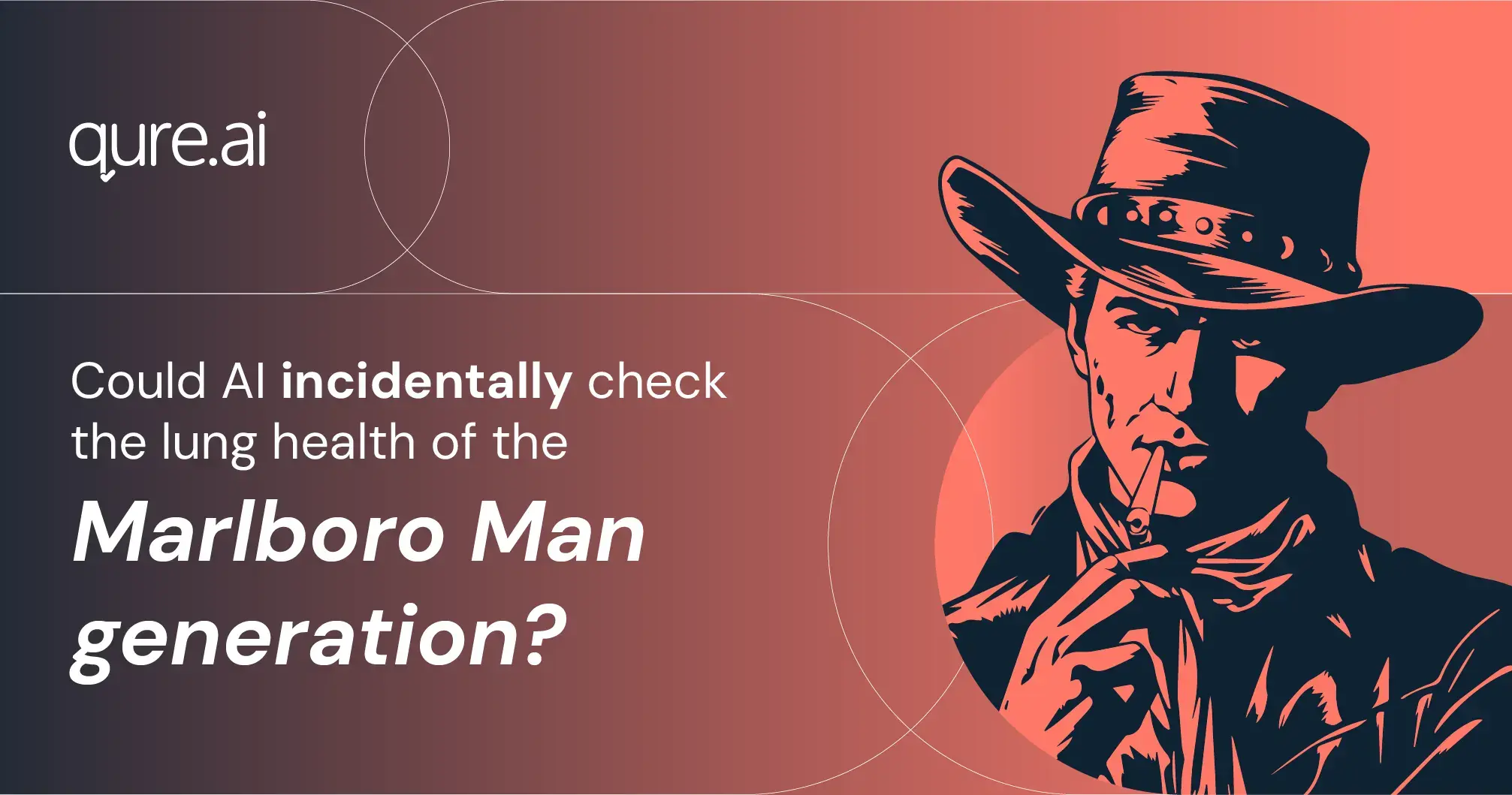In 1964, the US Surgeon General declared unequivocally that “cigarettes cause cancer”. This proclamation helped halt the escalating tobacco use rates over the first half of the 20th century, fuelled, in part, by one of the most iconic lifestyle advertising campaigns, ‘The Marlboro Man’.

Back
For decades the ‘Marlboro Man’ represented the epitome of masculinity and adventure. A rugged cowboy made filtered cigarettes acceptable to men, not just women to smoke. This caused the brands market share to surge within a year from only 1% to become the fourth best-selling brand in the nation.
Fast-track to the present day, and lung cancer is the leading cause of cancer-related deaths worldwide. Five out of the twelve men who portrayed the Marlboro Man have died of lung disease, and the ad campaign's target generation is now 50+, eligible for lung cancer screening themselves.
Yet, despite the availability of proactive lung cancer screening in the US, which in 2021 was expanded to begin at a younger age of 50 and a lower threshold for smoking history (20 packs a year instead of 30), only 5.8% of eligible Americans have been screened for lung cancer. In some states such as such as California and Nevada, screening rates are as low as 1.0% and 1.3%. Could the macho Marlboro Man persona somehow be to blame for low lung cancer screening uptake rates?
Rising rates of lung cancer yet low uptake of CT-based screening
The reasons behind low lung cancer screening uptakes are complex but include:
- Stigma and shame - citizens are concerned that lung cancer is a self-inflicted disease and fear being blamed for a cancer diagnosis, and are therefore less willing to consider screening.
- ‘I feel well’ – with no obvious symptoms and poor awareness of the benefits of screening, communities tend not to participate.
- Direct financial cost – half the population eligible for lung cancer screening have no insurance or Medicare, preventing screening due to high out-of-pocket costs.
- Ancillary costs – lower-income and rural populations face challenges such as costs to travel to screening centers far from home or being able to take time off of work to attend appointments.
Proactive CT-based lung cancer screening initiatives continue to attempt to augment efforts through public health education initiatives, political interventions such as Biden’s Cancer Moonshot and a US National Cancer Prevention and Early Detection Month. At the same time, advances in artificial intelligence (AI) are evolving to offer alternative diagnostic opportunities.
Chest X-ray AI has an opportunity to cast a wider net
One such innovation is computer vision on plain film for incidental detection of lung cancer. Qure.ai's qXR-LN chest X-ray solution demonstrates the potential of AI to accurately detect high-risk pulmonary nodules that can be indicative of lung cancer on routine X-rays at an earlier stage. It has achieved an impressive negative predictive value of 99.8% and an AUC score of 0.92 for detection of pulmonary nodules. By acting as a second pair of eyes for clinicians, AI can help detect subtle anatomical anomalies that may otherwise go unnoticed, particularly in asymptomatic patients.
The FDA-cleared qXR-LN (lung nodule detection) solution from Qure serves as a crucial second reader, assisting in the review of chest radiographs on the frontal projection. In a multicenter study involving 40 sites from across the United States, the algorithm demonstrated an impressive 94% PPV for nodule detection, highlighting its potential to significantly impact patient outcomes by identifying early signs of lung cancer that can be easily missed. By harnessing the power of AI for opportunistic lung cancer surveillance, healthcare providers can adopt a proactive approach to early detection, ultimately improving patient survival rates.
As we continue to combat the devastating impact of lung cancer, integrating AI-powered incidental pulmonary nodule detection from routine chest X-rays offers a promising avenue to complement traditional screening methods.
By casting a wider net and empowering clinicians with advanced tools to identify early signs of lung cancer, we can work towards reducing the burden of this deadly disease and improving patient outcomes worldwide.
Sources:
The term "Marlboro Man" is used in this article for descriptive and informational purposes only. All trademarks, including "Marlboro Man," are the property of their respective owners. Use of this term does not imply any commercial relationship or endorsement.